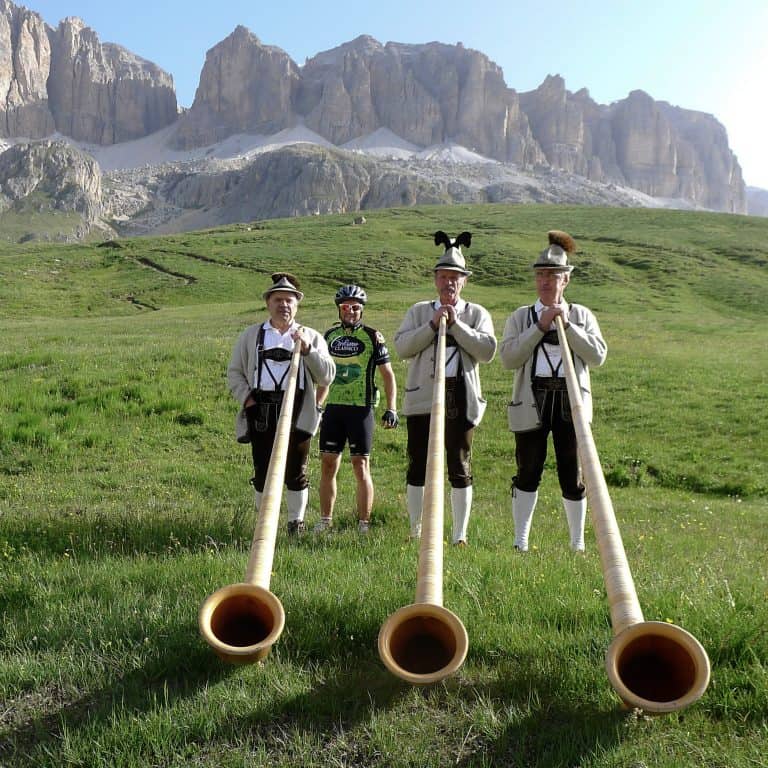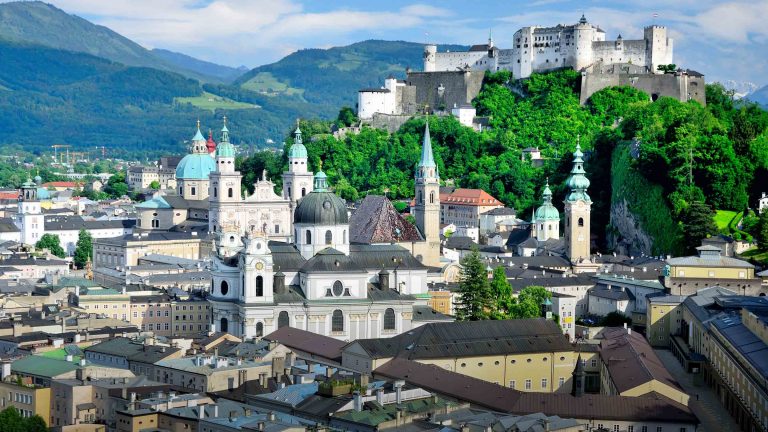8 Crucial Questions you Need to Ask Yourself Before Visiting Salzburg
8 Crucial Questions you Need to Ask Yourself Before Visiting Salzburg

You can’t discuss Europe without mentioning Salzburg. This Austrian metropolis has all of the characteristics a European center needs: music, culture, history and an amazing beer scene. You need the best Salzburg travel advice possible when planning your adventure. Salzburg is considered “the stage of the world” and when you land, it would be a shame to miss out on the show.
After all, Salzburg has won Lonely Planet’s best in Travel for 2020. But that’s not the only honor it has collected to its palmers. Salzburg has one of the most impressive collections of churches, rivaling Rome. But let us not forget the Hohensalzburg Fortress, the musical heritage crafted by Mozart and the beautiful gardens and zoos encircling this enchanting city packed with churches, castles and palaces. Salzburg has received a UNESCO heritage acknowledgment because of this rich ecclesiastical and historic heritage. So it’s only fitting you know what you are getting yourself into.
Within a week it would be impossible to see everything Salzburg offers. But here is Ciclismo Classico’s best Salzburg travel advice in “The Rome of the North.”

What do You Really Know About Mozart?
You probably know enough to whistle a few bars of Adagio in E Major, or possibly a bit of The Magic Flute. But that won’t get you too far when navigating the star-composer’s home town.
Both his birth-home and his adult residence have become popular museums in the city center. These locations will give you an excellent education on how talented (gifted) the young genius was at such an early age. But if you aren’t into elbowing crowds to get into Mozart’s homes, check out many of the concerts in the city. Or return to Salzburg during Mozart Week in January. Since Salzburg is the world’s music capital, in January – right around the composer’s birthday – the entire city comes alive with an internationally acclaimed concert series.
And as they should. Mozart’s father paraded his 6-year-old son in front of all the European courts, eagerly searching to unearth more of his raw talent. But it was in Italy where Mozart developed his talents to the level of genius we know today.
Are the Schloss-Mirabell Gardens Broken?
They are certainly not broken: they are baroque.
The Prince-Archbishop Wolf Dietrich built the Mirabell Palace in 1606 for his lovely Salome Alt. It is a stunning building, used today for weddings and important local ceremonies. However, it is stunning to consider that hundreds of years ago, Leopold Mozart and his children Wolfgang and Nannerl performed in these halls.
Yet the palace gardens are wonderful grounds of contemplation and admiration. And it is here the baroque characteristics of the palace explode. Some of the best Salzburg travel advice we can give you is to go see the gardens.
The gardens are a very typical baroque creation, but the Mirabell gardens seem to continue forever. The garden’s visual orientation towards the castle and fortress adds to the grandeur of the greens. It incorporates them into the overall ensemble of the city. You could spend hours (if not days) walking around the complex: from the Palace Chapel to the Grand Fountain; from the Hedge Theatre to the Dwarf Garden, there is something to see for all ages.

How Many Churches are in the Old Town?
A lot.
Consider that for over 1,000 years, the power in Salzburg was a mix of secular and sacred. The prince-archbishop (as mentioned above) was the singular city authority. As a result, Salzburg has a genuine treasure-trove of abbeys, churches and monasteries let alone impressive art collections and lovely town squares. All of this faith has enriched the city on cultural, architectural, and artistic levels. When following the best Salzburg travel advice, you need to stop into one or two of these beautiful structures. We highly recommend visiting the crypt at the Salzburg Cathedral or the Attic at the Kollegienkirche.
However, the churches are more than something to admire from a distance. Even for the non-practicing participant, it is difficult not to feel moved by the massive pipe-organs being played at dusk. These prince-archbishops held music in the highest regard. As a result, the most prominent European musicians came from all over the continent to play in the Salzburg courts. Today many sacred concert series still hold competitions to students and masters of this sacred music.
Is the Hohensalzburg Fortress just Another Castle?
Well, it is Europe’s biggest fortification. And it is undoubtedly the most beautiful. So calling it a castle is an understatement.
Initially built in 1077 and then enlarged in 1495 and 1519 due to the Hungarian Wars, it grew into one of the largest standing fortresses in all of Europe. It stands on the Festungsberg high plain: the mountaintop overlooking the baroque city center. It has become the emblem of the city, never breached or conquered by invading armies.
But this monument is more than an impenetrable fortress. It was a symbol of the power and richness of the Salzburg prince-archbishops. It was an extraordinary demonstration of the political power and authority they held. As a result, no foreign army ever seized the fortress because the prince-archbishops never intended it to see battle. It was a beacon of unlimited power to neighboring kingdoms and tribes.

What is wrong with the Schloss-Hellbrunn Fountains?
The Hellbrunn fountains have always been a place of excitement and wonder. Even the powerful Sazburg authorities would come to the gardens to be “entertained.”
Baroque Europe prided itself on engineering surprise and humor in some of the most unlikely places. And for most of the royalty, the gardens were the best places to play, keep secrets and discover new ones.
It was prince-bishop Markus Sittikus who planned the gardens at Hellbrunn as an oasis of enjoyment and leisure, seen nowhere in the Europen courts. Sittikus commissioned Italian architect and sculptor Santino Solari to engineer this astounding spectacle using Hellbrunn Mountain’s abundant water source as the main attraction.
The trick fountains are unique. From water-squirting bucks, to a mechanical theater to a dancing crown atop a spout of water – the Mannerist elements always delight visitors. They are original pieces exhibiting astonishing effects.
Will the Monks Bless Me at Saint Peter’s Stiftskulinarium?
No. Because it is a restaurant.
In fact, it is one of the oldest restaurants in Central Europe.
Documents attest to the founding of the restaurant in 803. Still today the ambience is a mix of the old and the new, of history and of the future. There are eleven historical dining rooms, an inner courtyard and a waitstaff attentive to every need (but they won’t bless you).
You can expect upscale fare and service, with a strictly Austrian menu. Some of the best Salzburg travel advice we can give you is to go eat there. Face it: there is no better place to have dinner in Salzburg than the city’s oldest restaurant!
Is Getreidegasse a Local Favorite?
Well…in a way it is.
The Getreidegasse is a neighborhood. And this neighborhood’s architecture boasts beautiful doorways, and windows that become steadily smaller from the first floor up. In addition, many of the houses in the Getridegasse belonged to Salzburg’s famous residents (Mozart, for example, live at number 9).
Possibly the most important aspect of the Getreidegasse is the lively shopping and walking every day. There are many stores belonging to international fashion chains, as well as traditional shops and many quaint dinning options. Our best travel advice for Salzburg would be to spend an afternoon along these streets in the Old Town and look for the guild signs. These insignia are large and hang high over the pedestrians heads.
Oddly enough, the name “getreide” is the German word for “grain.” However, the name of this street had nothing to do with grain. The original name of the street was Trabe- or Trav-Gasse: older forms of the verb “traben,” meaning to trot or lope along. Over many years, the locals mutated the original name into the Getreidegasse we know today.
Are Austrians Known For Their Beer?
Not only are Austrians known for their delicious beer, but Salzburg has an unparalleled beer culture.
Local brew-masters established the first commercial breweries in Salzburg towards the end of the 14th C. The Stiegl-Bräuerei is Austria’s largest privately owned brewery, dating back to 1492. Augustiner Bräu Kloster Mulin was founded in 1691. Beer brewing was subject to strict regulations under the power of the prince-archbishops. Taxes on alcohol brought massive contributions to city funding. As the city was absorbed into the Austrian crown, new production methods and new technology led to an increase in beer production.
Austria’s beer capital is Salzburg. Eleven breweries in and around the city reflect the impressive variety of opportunities available to beer afficionados. There are plenty of options if you’re thirsty, just quench your thirst towards the end of the day or else you won’t get to see the rest of the city!